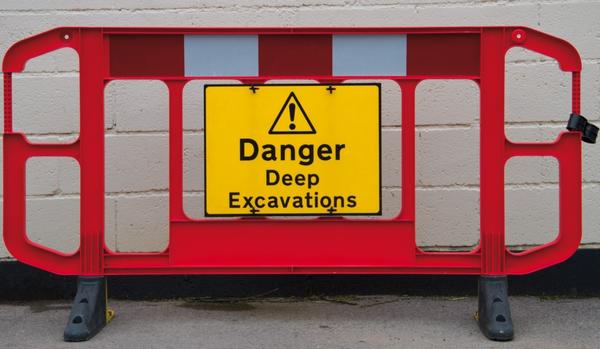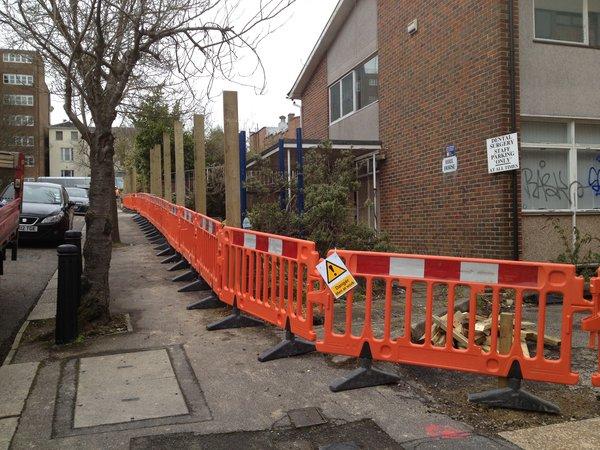- Next day delivery
- Installation service available
- Buy back on all products
- Rated Excellent
Temporary Street Works Legislation: What You Need To Know
Originally issued in 1991, the New Roads and Street Works Act became the subject of an update with a new Code of Practice in October 2014, with a specific additional focus on safety. Yet translating the theory of the updated code’s requirements (aspects such as risk assessment, the overseeing of procedure by a qualified and competent person and the utilisation of adequately signed barriers fit for the purpose) into the practical guidance needed by those whose construction work impacts on the roads and highways, can be difficult.
However, if you’re going to be working on the roads, our short guide and safety barrier expertise will help you set out in the right direction.
What relevant legislation applies?

As well as general public safety legislation, the specific codes of practice which apply when working on the roads are:
- New Roads and Street Works Act
- The Department of Transport’s Traffic Signs Manual, specifically Chapter 8 (part 1) and Chapter 8 (part 2)
If your event, project or construction work is likely to affect the public highway in any way, being aware of the organisational and operational requirements of these guides will inform your practice. Following the guidelines carefully is your duty in order to keep workers and the public safe and actual failure to comply with these codes is the same thing as failing to comply with the law. As a result, those doing so could find themselves being prosecuted and even being sued for negligence, in the case of problems arising.
Who does the legislation affect?
The New Roads and Street Works Code of Practice and the guidance of the Traffic Signs Manual affects anyone involved in organising and setting out temporary street works, or whose off-street works will impact on the roadway. This can include (but isn’t limited to):
- Highways and Road Authorities
- Utility companies
- Private companies
- Supervisors and managers
- Organisers and planners
- Operatives and groundwork staff
Who does the legislation protect?
The legislation sets out to protect all members of the public who use roadways, including:
- Vehicle road users
- Pedestrians
- Cyclists
- Equestrian (horse riders)
- The disabled, including the sensory impaired as well as wheelchair and mobility vehicle users
- Those using pushchairs
What practical areas do these codes relate to?
The practical aspects of street and road working, which these codes particularly relate to, include guarding of zones (safety barriers), lighting and appropriate signage of works.
What should “best practice” for compliance with the recommended guidance include?

Careful compliance with legislative guidance is a good way of demonstrating best practice, but there are additional elements of the guidance to which you can pay additional attention, which can benefit your practice, your reputation and your community, when working on the highways:
Preparation
Thorough preparation is a must for any construction or road-working project and should include:
- Following relevant local authority licensing procedures, including compliance with deadlines, fee requirements and notice of dates of work.
- Providing detailed plans which include all traffic management and pedestrian management proposals. The detail of the plans should always include suitably scaled measurements, including footway and carriageway measurements.
- Following recommendations for appropriate management of the project with a suitably qualified overseer. What counts as qualified in this sense includes a professionally-qualified personnel, such as a professional surveyor. Similarly, when works are being undertaken, preparation should include ensuring that at least one professionally qualified operative is on-site at all times when work is in progress.
- Preparation might also involve working in conjunction with other companies, such as utility companies, in order that other planned works are not interrupted, or that other services which are located in the roadway, such as drains, are not compromised for the duration of your own intended works.
- Insurance and indemnity cover (including additional cover which relates to the likely use of the road at the time of the works, for example additional indemnity against accidents for children, if the footways involved lead to a school).
- Research and purchase of fit for purpose safety barrier and roadside signage systems.
- Thorough risk assessment and action plan to address additional risk factors.
Operation
When it comes to the on-the-ground operations, there are several aspects that it is important to get right:
Signage
- Must be clear and unobstructed;
- Must provide an early warning as well as immediate warning of obstructions, work spaces and safe / unsafe zones.
- Must give clear directional information for both road users (vehicles) and pedestrians.
- Must highlight speed restrictions to vehicle road users.
- Should be securely placed and checked regularly in case of tampering or removal by vandals.
Lighting
- Must be safety approved in relation to location and weather conditions.
- Must provide adequate lighting in poor weather and overnight, both for safe / unsafe zones and work areas as well as for signage, which should be appropriately lit at all times.
- Like signage, lighting should be subject to a rigorous schedule of checking, both its working order and security, in case of vandalism or failure to work.
- Awareness should be shown of any restrictions to the displaying of lights, such as in highly residential areas at night, without increasing risk in the work zone.
Safety Barriers
- The types of safety barriers used should be fit for purpose – in relation to traffic, pedestrian and site worker safety.
- Safety barriers should also be selected with local conditions in mind – such as ballast supported, wind resistant barriers in high wind locations or poor weather seasons.
- Using high visibility safety barriers which can incorporate warning signage offer additional, practical solutions for providing additional safety.
After the work is completed, compliance is also expected in the clearing of the site and leaving it safe for use. It helps if any temporary constructions such as barriers can be quickly and safety dismantled, whilst signage maintained to ensure public awareness of works during clearance.
Finally, as a professional, you are fully aware that road working safety is a serious issue, with legal compliance fully expected. This guide is for general information purposes only: it cannot cover every type of road working situation. Anyone whose work will involve the roads is expected to check the relevant legislation and apply it to their own situation, with location and local authority requirements in mind and make provision to satisfy all of these aspects, in compliance with the law.
For additional advice on suitable safety barriers, SafeSite Facilities offer free site surveys and advice, with no-obligation quotes for hire or purchase of our barriers, delivered anywhere in the UK.
Request a free no-obligation quote
We respond in under 30 mins on average (excl. weekends)